Reproduction of phlox by cuttings: rules and step-by-step instructions
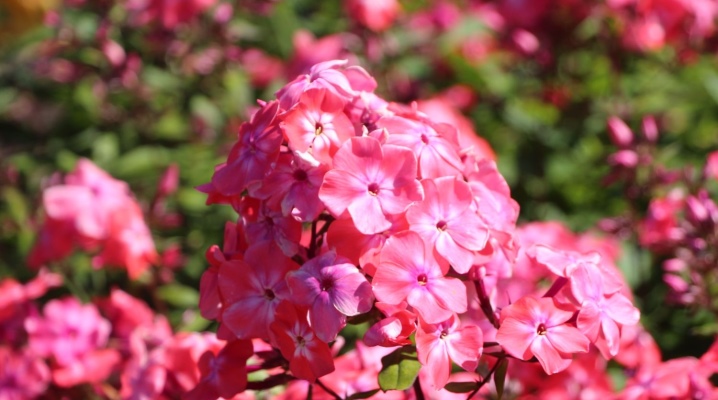
A beautiful and lush garden, a neat and brightly decorated backyard and adjoining territory - this is the aspiration of many, but not everyone knows how this can be achieved. Not all plants are suitable for decorating a territory for a number of reasons, which cannot be said about phlox. Beautiful, lush blooming, with various colors - these are the very representatives, thanks to which you can achieve the desired appearance of the territory. In order for phlox to be enough, it is necessary to be able to propagate them correctly, for which the grafting procedure is best suited, which is important to perform clearly and correctly.
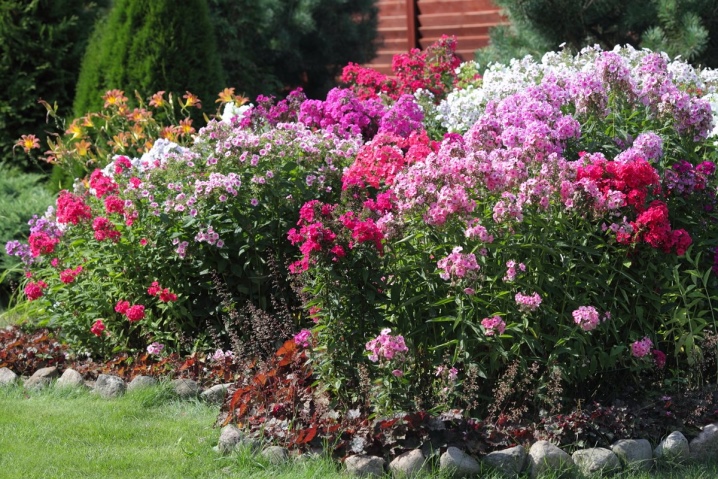
Basic rules for grafting
Phlox is a herbaceous plant of the Synokhovye family. The breeding of this culture began in the 18th century, and today more than 1,500 varieties can be distinguished, about 40 varieties out of 70 are now actively cultivated. Phloxes have a beautiful and bright flowering, pleasant and delicate aroma, which makes them desirable in any garden, and minimal maintenance and good resistance rates make this crop a favorite of gardeners.
These plants in nature can have a different appearance, which depends on the place of their growth. Mostly phloxes are erect bushes, the height of which can vary from 30 to 180 cm.According to the flowering time, the culture can be divided into early, when flowers appear in spring, medium - with summer flowering, and late, when flowers delight the eye in summer and autumn. There are a lot of foliage on the bushes, it has an oblong shape, the flowers are funnel-shaped, they are small - from 2 to 4 cm in diameter, with their help inflorescences are formed, in which more than 90 flowers are formed.


To get a large garden of phlox, you do not need to buy these plants in the market or in the store, they can be propagated, provided that there are at least a few bushes on the territory. The most effective breeding option is considered to be working with cuttings. The main material can be used:
- stems;
- leaves;
- roots.
The essence of working with each of the parts of the plant is approximately the same, the result is a new and strong plant that has the same characteristics as the mother bush. Using cuttings is quite simple, even a beginner can cope with this task, therefore this technology is considered the most effective.
Thanks to the use of only parts from an adult bush, it is possible to preserve its appearance without disturbing its decorative effect.

Timing
In order for the bush to survive reproduction well, and the new plant quickly grows, it is important to choose the right timing for the procedure. Depending on what kind of material will be chosen for the work, the time of its carrying out will differ. In the case of working with phlox stems, it is best to cut them at the moment when the buds are formed. If you prepare the material in late spring and early summer, then it will be possible not to harm the mother bush, and also give enough time for the cuttings to germinate, and new plants have time to form before the onset of cold weather. Despite the recommendations, many gardeners germinate cuttings throughout the summer and even with the onset of autumn.Due to the varying degrees of culture activity, some blanks may not germinate and will disappear, therefore it is advisable to cultivate phlox at a time when they are at the stage of the most active growth and development.
Cutting crops with the help of sheets is best done in summer, in June or July, when the bush is already formed. Then the loss of any of its parts will not cause serious damage to the entire plant. It is worth using root cuttings either in early spring or late autumn.
In August, you need to outline those plants that are suitable for the procedure, carry out preparation, full-fledged care in the summer, and with the onset of coolness and at rest, prepare the necessary root cuttings.
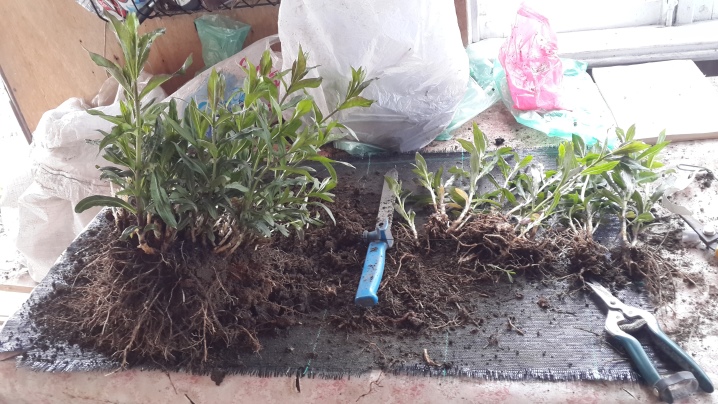
Step-by-step instructions for propagation by cuttings
Breeding phlox at home will not be a problem if you approach the issue correctly. In order for the rooting of any part of the plant to occur quickly and fully, the procedure must be carried out in cloudy weather or at least in the shade. All planting material from the moment of cutting to the landing procedure should be in a box with a damp base, covered with moisture-retaining material. To root the cuttings, they must be treated with a growth-stimulating composition, and right before planting, it is worth lowering parts of the phlox into a solution of aloe juice, which further stimulates the growth of a new plant.
Planting should be carried out on a cloudy day or in the evening, so that the cutting is in comfortable conditions for as long as possible and can start the process of growth and development. If a new flower garden is laid out in a sunny area, for the first time it should be shaded and provided with good care. Regardless of what the phlox plant is used for, it is important to follow the order and adhere to the instructions derived by gardeners with extensive experience with phlox.
The sequence of actions and algorithm when working with green cuttings will differ from propagation using roots, therefore it is important to have all the necessary knowledge before starting work.
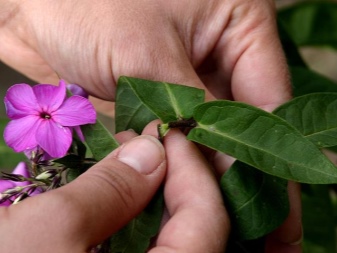
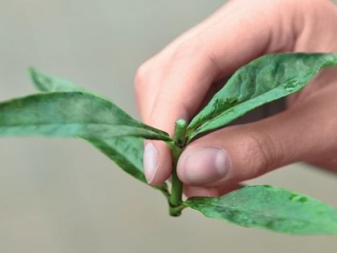
Stem
To get good cuttings for breeding phlox, you need to select normally developed, healthy and well-flowering plants. The procedure for harvesting cuttings and propagating a culture will look like this.
- Selection of the most developed and strong green stems.
- Check the selected material for the presence of diseases and pests.
- In the period from May to June, a whole stem can be used for reproduction, therefore it is recommended to cut it off at the very ground.
- If work is carried out in July-August, then the lower part for germination is no longer suitable, since it will already become lignified, and 2/3 of the upper part of the shoot will be needed for work. It is important to check the stem for softness, if it has become dense, then this area is not suitable for breeding.
- Cuttings must be harvested with a sharp knife, cutting the stem so that 2 knots remain on each piece. From the bottom, you need to make an incision immediately below the knot, and at the top, leave 1 cm of stock above the second knot.
- The lower leaves should be torn off so that the buds at their base remain intact.
- The top leaves should be cut in half to help reduce moisture evaporation and drying out of the cuttings.
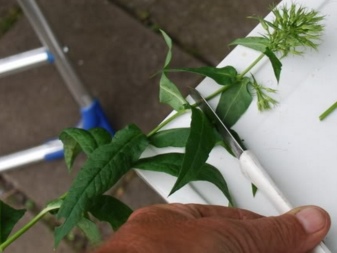
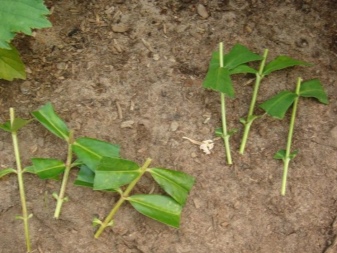
To propagate phlox by cuttings from green stems, you need to prepare boxes where the picking procedure will be performed, for this:
- you need to pick up a box made of wood, the height of which will be 10 cm;
- the inside is treated with an antiseptic, for example, potassium permanganate, after which the container is well dried;
- prepared loose soil is poured into the box, the layer height should be 5-6 cm;
- coarse sand is poured over the soil, the layer of which should not exceed 2 cm.
Once everything is ready, you can proceed to the procedure for planting stem cuttings, which follows this algorithm.
- Holes are made in the ground at a distance of 6x8 cm from each other.
- Cuttings are placed in the holes so that both nodules are immersed in the soil.
- Gently tamp the soil near the cutting with your hands or a stick so as not to hurt the cutting;
- It is worth watering the soil so that the stems are still inside, without looking to the surface. Place the drawer in a warm but dark place.

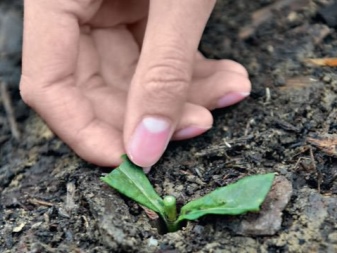
In order for the stems to give roots, it is important to look after them carefully. During the first week, watering is carried out 3 to 5 times a day, the water should be warm, not lower than +27 degrees, if the soil is supercooled, the roots will germinate for a very long time. After about a month, the first roots are formed, at the same time one or more shoots sprout from the upper node.
If the germination process took place in late spring and early summer, then phlox germination is carried out already in the open field with young plants planting in mid and late summer. It is worth placing new bushes at a distance of 15x10 cm from each other, you can make a greater distance of 20x10 cm.In order for the bushes to take up well, they are fertilized with a mullein from 2 to 3 times, you can also use nitrogen-containing fertilizers.
If the stem cuttings took root in late summer and early autumn, then you cannot leave them in the ground for the winter, otherwise they will freeze. Such plants are dug up and placed in boxes, which are installed in a cool, unheated room for the entire frost period. With the onset of spring and steady heat, the culture is again planted in the ground and is no longer dug up for the winter.
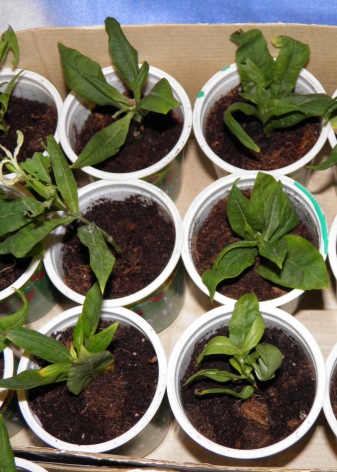
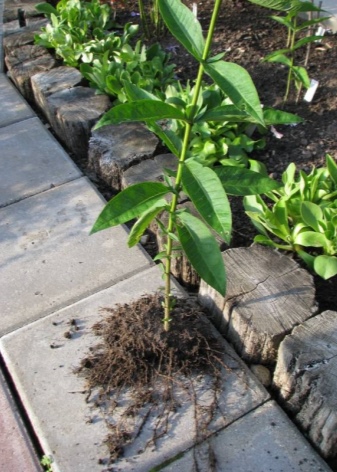
Leafy
Reproduction of phlox with leaf cuttings is much like the procedure using the stem. The step-by-step instruction looks like this.
- Preparing the box in which the cut foliage will take root. It is necessary to collect about 6 cm of nutrient soil into the container and sprinkle it on top with a centimeter layer of coarse sand.
- Prepare leafy cuttings, for which a leaf is cut with a blade, along with part of the stem and bud.
- The leaves are placed in the ground at a distance of 5 cm from each other. Part of the stem and bud should be underground, and the leaf above its surface at a slight slope.
- Moisten the soil, making sure that the cuttings remain in place.
- Cover the box with glass and put it in a room where the temperature will be at 19 degrees Celsius.
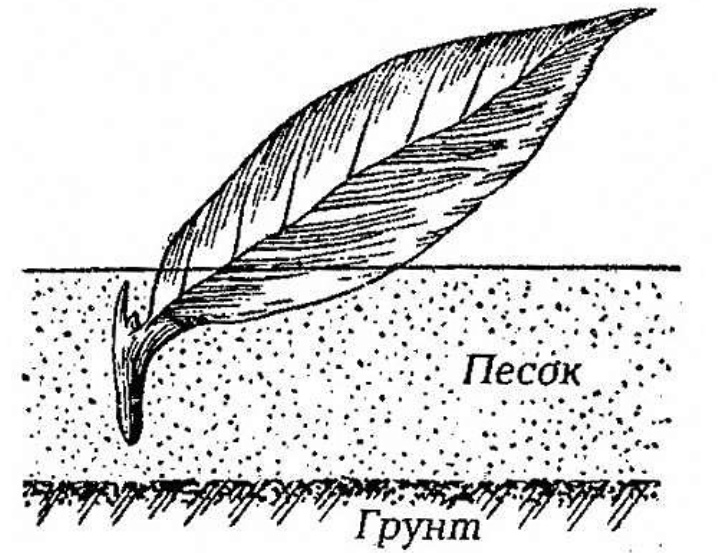
The procedure for caring for leaf cuttings resembles the activities that are carried out with stem blanks. An important task of the first days is watering, which is carried out several times a day. In order not to damage the leaves, it is better to apply moisture with a sprayer, it is necessary to ensure that the soil is always moist. In hot weather, it is important to protect the cuttings from direct sunlight by covering the container with newspaper or material that does not allow light to pass through well.
A month later, the roots will begin to grow, and an shoot will grow from the bud, which must be pinched to form a beautiful bush. By the end of summer, cuttings are planted in open ground, since their root system is already well developed. Before the onset of a cold snap, it is necessary to apply fertilizers 2 times in the form of organic or nitrogen-containing chemical compounds. For the winter, cuttings are dug up, and from the beginning of May they are planted in their permanent place.
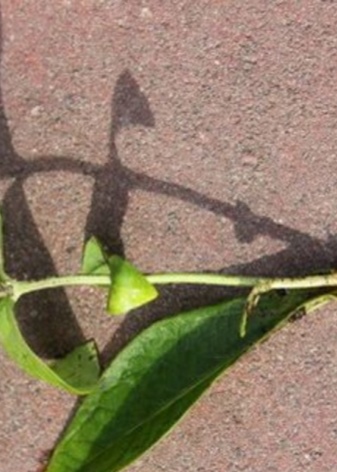
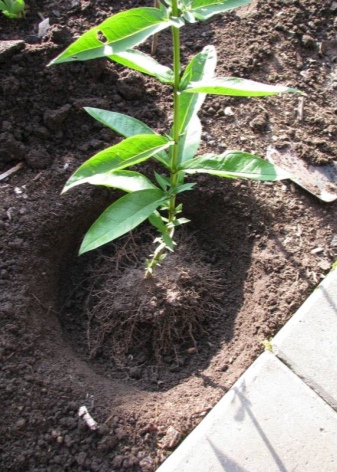
Root
It is worth using roots for germinating phlox when shoots and leaves cannot perform this function due to infestation or pest attacks. The root propagation procedure should be carried out at the very beginning of spring, adhering to this order.
- Dig out a phlox bush and select the thickest and strongest roots.
- Divide the roots into pieces about 6 cm long, which will have thin roots.
- Prepare the landing box by filling it with nutritious soil.
- Place the roots in the ground at a distance of 8 cm from each other, placing them with a thin edge down, and with a thick edge up.
- On top of the soil, the roots are covered with sand, layers of 4-5 cm.
- The contents of the box are well moisturized.
- Place a container with roots in a room without sunlight and with a temperature not exceeding 14 degrees Celsius.
- After 2 weeks, you need to raise the temperature to +18, which will stimulate the growth of shoots.
- With the appearance of the first shoots, it is necessary to harden with light, taking the box outside for a short time, but protecting it from direct sunlight.
- In late spring, cuttings are planted in the ground and germinated. In winter, they are dug up and planted in a permanent place next spring.
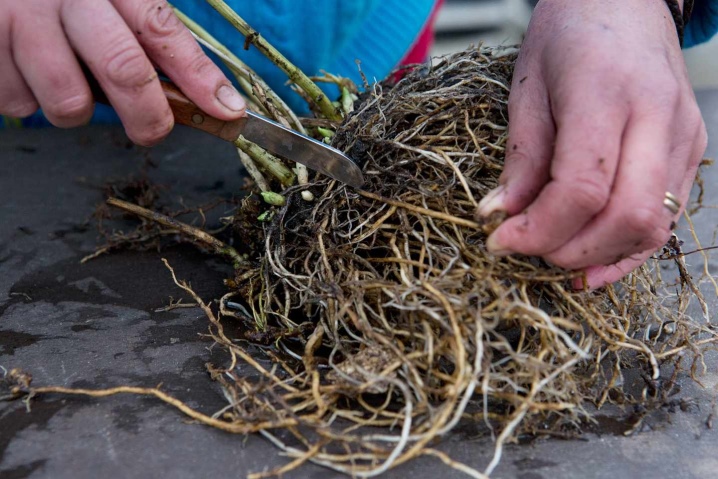
Reproduction by roots can also be carried out in the fall, but this is more laborious work that will need to be done throughout the winter and half of the spring, therefore it is recommended to work with the roots in the spring.
Follow-up care
To grow phlox from cuttings, it is important to adhere to the recommendations for the germination procedure, as well as create optimal conditions for the plant in the subsequent period. The main thing is the condition of the soil, which must always be moist so that the culture can begin active growth and development. Green cuttings should be additionally sprayed with water from a spray bottle.
In order for the cuttings to develop correctly in the germination container, it must be periodically ventilated, which significantly reduces the risk of developing diseases and the appearance of harmful microorganisms. The frequency and intensity of watering should be gradually reduced, preparing the plant for environmental conditions, but the main thing remains soil moisture.
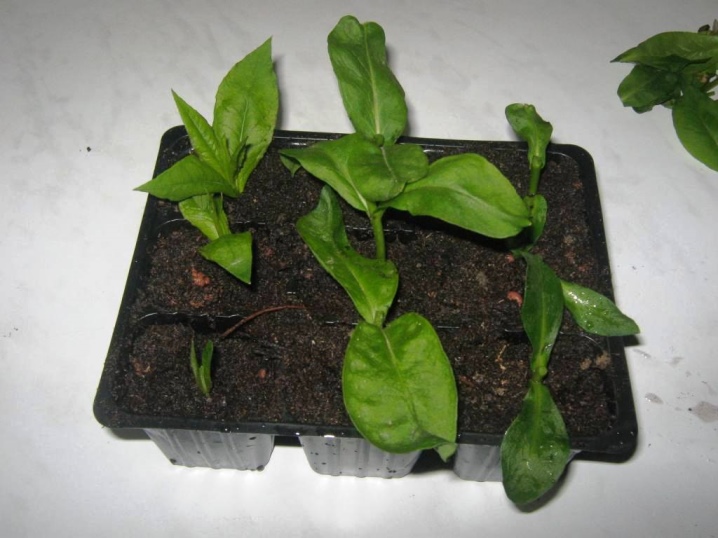
When the cuttings take root and germinate, they are planted in open ground. Caring for phlox in a flower garden is simple and consists in weeding the earth, eliminating any weeds, loosening the soil, and timely watering. It is recommended to mulch the soil every spring and apply fertilizer in the fall. Watering is best done in the evening, and cut off the inflorescences in the morning. For a beautiful flowering, it is recommended to leave about 7 stems on the plant. With the right choice of cuttings, well-conducted measures for their rooting, you can get a large number of new plants that will decorate the garden with lush and colorful flowers.
For information on how to propagate flos by cuttings, see the next video.







































































































The comment was sent successfully.